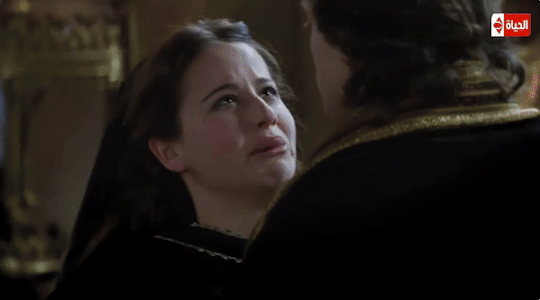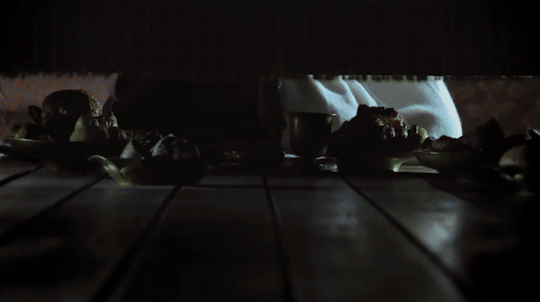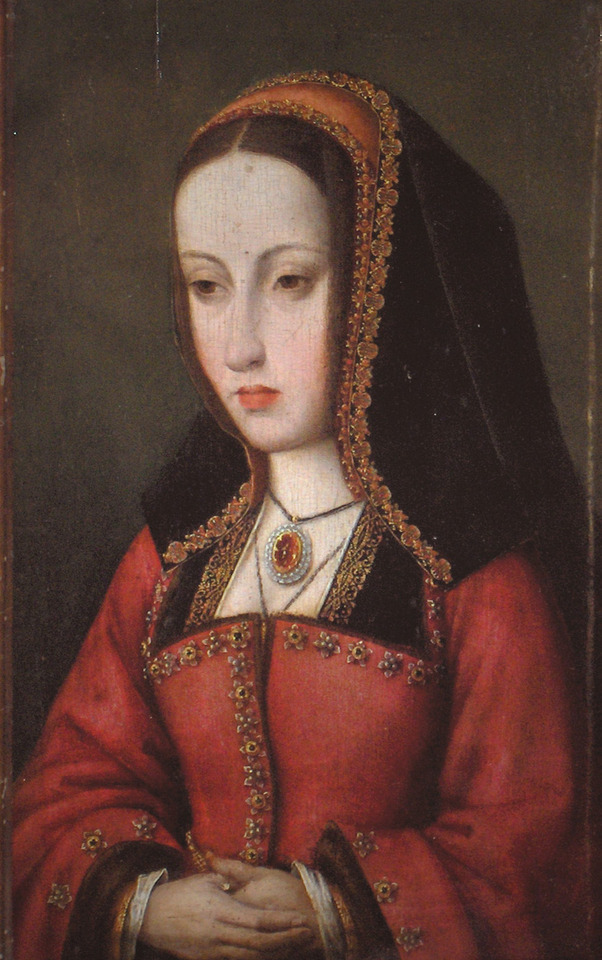#Philipp I. von Kastilien
Text
Thread about Joanna of Castile: Part 8: “The Tragic Departure: Philip's Refusal and Juana's Suffering




















Philips' refusal to stay longer shocked both monarchs and procurators. Castilian procurators warned that if he crossed France during wartime, he would be considered a traitor, exposing himself to the mercy of his enemies and endangering Juana's life. This would not only undermine the monarchs, but also the interests and honour of all Spain, and would cause great agitation. The Aragonese procurators appealed to Philip in the same way. Although the monarchs persuaded Juana to remain for the birth of their fourth child, Philip left Madrid on 19 December.
Martire was dismissive of Juana, who showed no sign of 'royalty or courage'. Burton, perhaps familiar with Martire’s letters, later summarised the situation in his opus on melancholy.


Juana was:
“So impatient and melancholy upon [Philip’s] departure, that she would scarce eat her meat, or converse with any man; and though she were with child, the season of the year terrible, the wind against her, in all haste would to sea after him.”
Historians have also attributed this distressing episode to Juana's personal obsession with Philip, underestimating the broader political aspect. As with all female royals, Juana was born into a highly political setting. Even though she wasn't power-hungry, honour and reputation mattered to her. She was not only affected by her separation from her husband, but also by his conduct towards her. As a result, Juana, who wore violet for her reunion with Isabel in May, bid Philip farewells in December.
Almost certainly, this signalled more than personal grief. She was heir to the many realms of Castile and Aragon and beyond personal grief and dishonour, her mourning signalled a political calamity.
The idea that Philip had run from his commitments as soon as the oath-taking was over made people doubt the succession, which made it very unlikely that the Spanish kingdoms could be ruled by princes who were also archdukes of Austria and dukes of Burgundy. This left Juana with a difficult decision, although not necessarily a resolute one:
To abandon her husband and children and remain in Castile to confront an uncertain future; or, in the event of Isabel's demise, to allow Fernando to continue to lead until Charles reached adulthood.
Considering the magnitude of negative remarks regarding Juana's conduct, it is noteworthy to recall that throughout the spring, she remained faithful to her royal duties. She made various acts of religious patronage, including visits that January to the Clarisan monastery of Rejas. Another sign that she supported the Franciscan order comes from a note written by a man named Francisco Segarra, who was hired by the kings to inspect monasteries in Aragon in 1493. Segarra thanks Juana for an act of charity and for her letters, in which she told him not to hesitate to ask her for more help. He hopes to be able to visit her soon.




On 10 April, she brought comfort to her parents with the birth, at Alcalá de Henares, of a second son, Ferdinand, whom she agreed to leave in Castile. Sandoval describes Juana’s pleasure at the birth and the (fattering) sermon about her that Villaescusa preached at the baptism. Zurita refers to the:
“Great respect that the princess always had for the queen.
Sources: Fleming, G. B. (2018). Juana I: Legitimacy and Conflict in Sixteenth-Century Castile (1st ed. 2018 edition). Palgrave Macmillan.
Fox, J. (2012). Sister Queens: The Noble, Tragic Lives of Katherine of Aragon and Juana, Queen of Castile. Ballantine Books.
Gómez, M. A., Juan-Navarro, S., & Zatlin, P. (2008). Juana of Castile: History and Myth of the Mad Queen. Associated University Presse.
#joanna of castile#juana i of castile#philip the handsome#juana la loca#isabel#irene escolar#Raúl Mérida#Philippe le Beau#Felipe I de Castilla#Felipe el Hermoso#Philipp I. von Kastilien#Filips I van Castilië#Johanna van Castilië#Jeanne la Folle#european history#johanna van castilie#catherine of aragon
5 notes
·
View notes
Text
Johanna von Kastilien

Johanna von Kastilien
"Johanna I. von Kastilien, genannt Johanna die Wahnsinnige (span. Juana I de Castilla bzw. Juana la Loca; * 6. November 1479 in Toledo; † 12. April 1555 in Tordesillas), aus dem Hause Trastámara war ab 1504 Königin von Kastilien und ab 1516 Königin der Reiche der Krone von Aragonien. Wegen einer vermuteten oder zumindest zeitweise aufgetretenen psychischen Erkrankung wurde sie von den Regierungsgeschäften ausgeschlossen."
"Johanna hatte schon lange bevor sie als „loca“ – das bedeutet eher „närrisch“ als geisteskrank – bezeichnet wurde, durch ihr Verhalten in ihrer eigenen Familie wie bei Hof Erstaunen und Ablehnung erweckt, insbesondere in Bezug auf ihren Gemahl Philipp."
"Statt nach spanischer Tradition in bedingungslosem Glauben der katholischen Kirche anzuhängen, zeigte sie einen deutlichen Mangel an Glauben, vermied die Beichte und selbst den Besuch der Messe. Eine solche Haltung war für die Erbin der „Katholischen Könige“ – die im Dienste des Glaubens 1492 das Königreich Granada von den Muslimen erobert und die Juden aus Spanien vertrieben hatten – völlig undenkbar. Dies wurde zwar streng geheim gehalten,[24] führte jedoch zu ständigen Reibungen mit ihrer Mutter Isabella, die sie angeblich zeitweise mit Freiheitsentzug strafte und sogar die Absicht gehabt haben soll, sie deswegen zu enterben.
Diese Haltung löste naturgemäß bei Cisneros, dem Beichtvater der „Katholischen Königin“ Isabella, schwere Bedenken gegen die Herrschaft einer nicht religiösen Königin Johanna aus, was sich später, als er zum Primas von Spanien, zum mächtigen Großinquisitor, schließlich zum Regenten des Königreiches Kastilien aufgestiegen war, zweifellos zu ihrem Nachteil auswirkte.
Bezüglich der Vernachlässigung des Glaubens war auch Johannas Sohn und Erbe, Erzherzog Karl von Österreich, unerbittlich, da er befahl, dass seine Mutter in Tordesillas – notfalls mit Gewalt – zur Beichte und zum Besuch der Messe gezwungen werden sollte.[25]"
(Quelle)
1 note
·
View note
Photo



Girart d'Amiens - Paris Bibliothèque nationale de France MSS Français 1589 - Meliacin ou le Cheval de Fust
Dedikationsblatt des Meliacin ou le Cheval de fust von Girart d’Amiens, Frankreich um 1285. Bibliothèque nationale de France, manuscrits français 1589, folio 1r. Dargestellt sind von links nach rechts: Walter V. von Châtillon († 1329) Johanna I. von Navarra († 1305), Königin von Frankreich Maria von Brabant († 1321), Königin von Frankreich Blanka von Frankreich († 1323), verwitwete Prinzessin von Kastilien die ihren Neffen krönt Philipp IV. († 1314), König von Frankreich Johanna von Châtillon († 1292), Gräfin von Blois und Alençon Beatrix von Burgund († 1310), Gräfin von Clermont Blanka von Artois († 1302), verwitwete Königin von Navarra und Gräfin von Lancaster Rudolf II. von Clermont († 1302), Herr von Nesle, Connétable von Frankreich
45 notes
·
View notes
Photo


@Neoprusiano
Reina Juana I de Castilla, de Aragón, de Navarra, de Nápoles y de Sicilia
Regina Ioanna I Castellae, Aragoniae, Navarrae, Neapolis et Siciliae
Königin Johanna I. von Kastilien, von Aragón, von Navarra, von Neapel und von Sizilien
Queen Joanna I of Castile, of Aragon, of Navarre, of Naples and of Sicily
Reine Jeanne I de Castille, d'Aragon, de Navarre, de Naples et de Sicile
Rey Felipe I de Castilla y Duque de Borgoña
Rex Philippus I Castellae et Dux Burgundiae
König Philipp I. von Kastilien und Herzog von Burgund
King Philip I of Castile and Duke of Burgundy
Roi Philippe I de Castille et Duc de Bourgogne
Meester van Affligem, 1500.
Meester van de Magdalenalegende, 1499.
#Rey#King#Reina#Queen#Imperio Español#Spanish Empire#España#Spain#Juana I de Castilla#Felipe I de Castilla#Meester van Affligem#1500#Meester van de Magdalenalegende#1499
98 notes
·
View notes